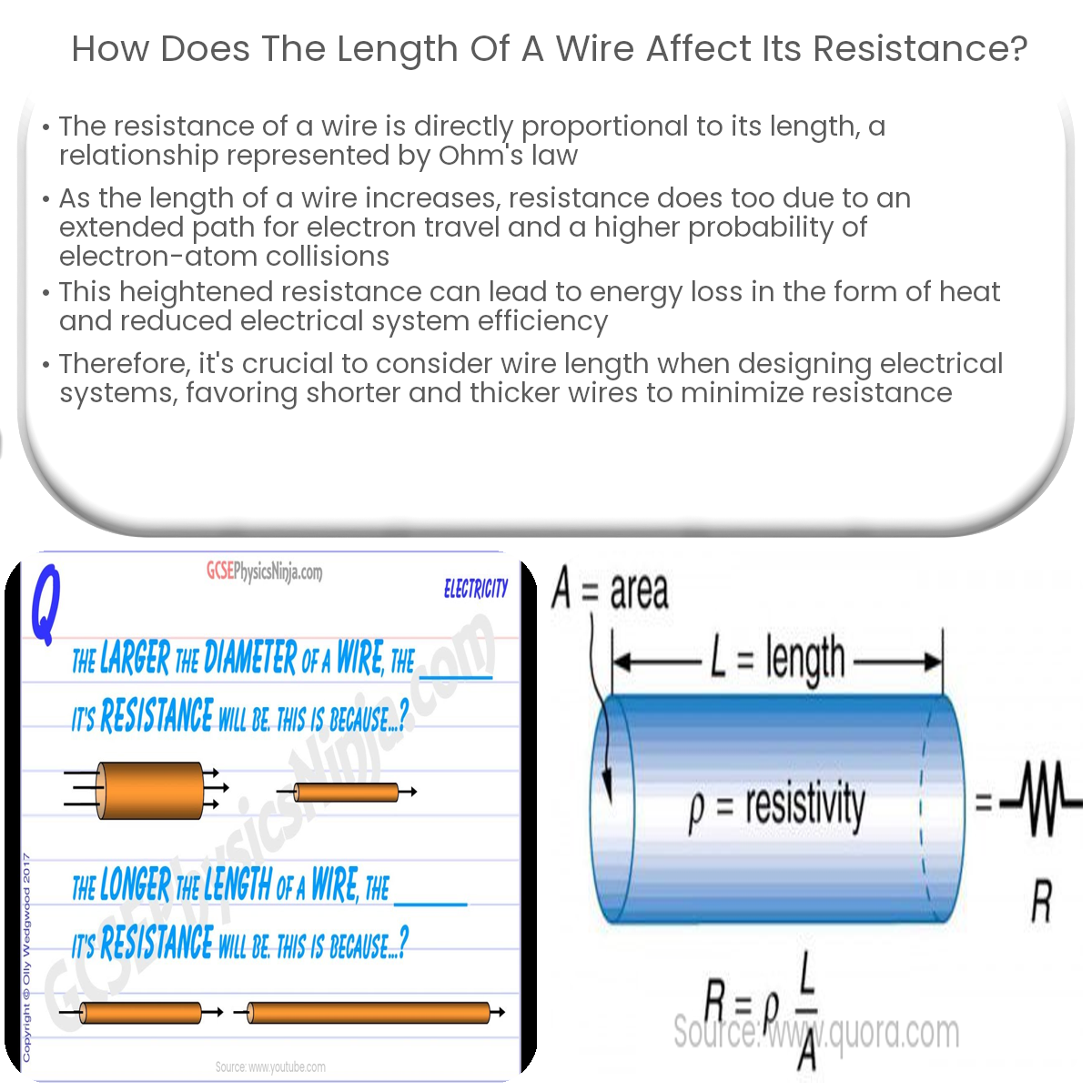The resistance of a wire is directly proportional to its length; as the length increases, the resistance increases due to more electron-atom collisions.
How the Length of a Wire Affects Its Resistance
In the world of electricity and electronics, understanding the factors that influence the resistance of a wire is crucial. One such factor is the length of the wire. This article will explore how wire length affects its resistance and provide an explanation of the underlying principles.
Relationship between Wire Length and Resistance
The resistance of a wire is directly proportional to its length. As the length of a wire increases, its resistance also increases, and vice versa. This relationship can be mathematically represented by Ohm’s law:
R = ρ (L / A)
Where:
- R is the resistance of the wire;
- ρ (rho) is the resistivity of the wire’s material;
- L is the length of the wire; and
- A is the cross-sectional area of the wire.
This equation demonstrates that resistance is directly related to the length of the wire, assuming that the material’s resistivity and the wire’s cross-sectional area remain constant.
Why Wire Length Affects Resistance
There are two primary reasons why wire length affects resistance:
- Increased Path Length: As the length of a wire increases, the path that electrons must travel to move from one end to the other becomes longer. This longer path results in more collisions between electrons and the wire’s atoms, causing an increase in resistance.
- Greater Probability of Collisions: A longer wire contains more atoms, leading to a higher probability of electron-atom collisions. These collisions impede the flow of electrons, thereby increasing the resistance of the wire.
Practical Implications
Understanding the relationship between wire length and resistance has several practical implications:
- Energy Loss: Increased resistance due to longer wire lengths leads to higher energy loss in the form of heat. This can result in reduced efficiency in electrical systems and the need for additional cooling measures.
- Wire Sizing: To minimize resistance, electrical systems should be designed with appropriate wire lengths. Shorter wires can be utilized when possible, and thicker wires can be employed to compensate for the increased resistance caused by longer lengths.
In conclusion, the length of a wire has a direct impact on its resistance, with longer wires exhibiting higher resistance. This relationship is governed by Ohm’s law and results from increased path length and a greater probability of electron-atom collisions. Being mindful of wire length and its effect on resistance is essential for designing efficient and safe electrical systems.


